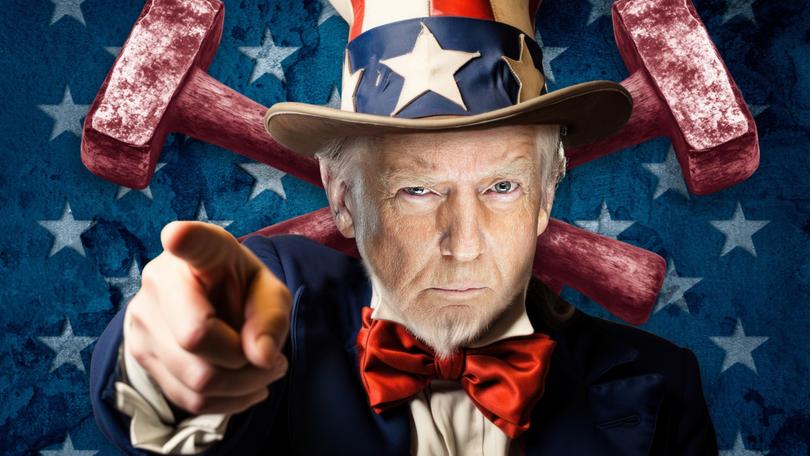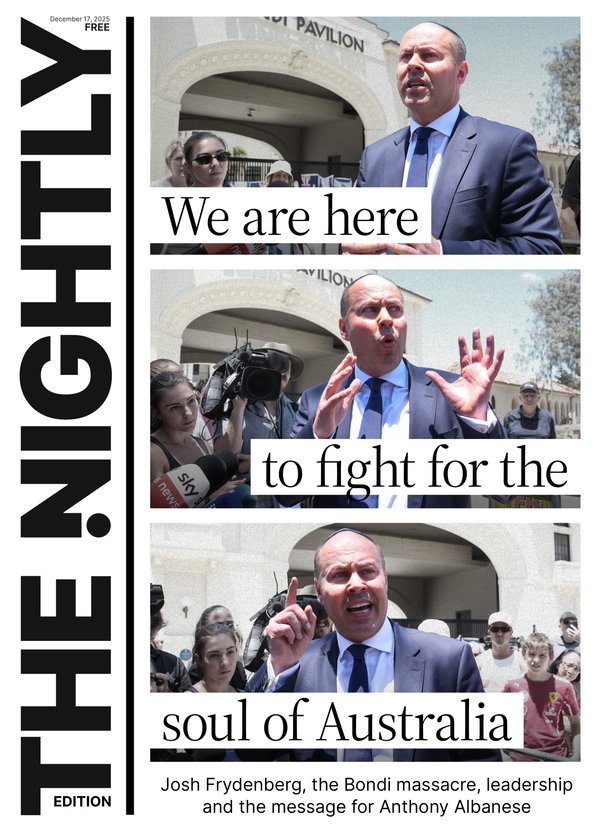THE ECONOMIST: Donald Trump’s ‘Liberation Day’ tariffs are set to whack the US economy

Even his most ardent detractors would grant that Donald Trump is a masterful marketer. So it goes for the barrage of tariffs that he is set to unveil on April 2. The President has promised they will mark “Liberation Day” for America — a turning point when the country starts to claw back the respect and money that, he thinks, it has lost over the decades.
In practice there will be nothing liberating about it. Over the two months since returning to the White House, Mr Trump will have brought America’s overall tariff level to its highest since the second world war, setting the country up for slower economic growth, higher inflation, more inequality and, quite possibly, fiscal trouble.
How bad will things get? Everyone, reportedly including Mr Trump’s closest advisers, is awaiting the final details. The President has swung between hinting at lenience and insisting his administration must take a hard line.
Sign up to The Nightly's newsletters.
Get the first look at the digital newspaper, curated daily stories and breaking headlines delivered to your inbox.
By continuing you agree to our Terms and Privacy Policy.Yet as he has done so, the outline of his approach has come into focus. On the campaign trail he regularly vowed to introduce a universal tariff of 10 per cent or 20 per cent on all imports. Soon after taking office, that idea was supplanted by a pledge for “fair and reciprocal” tariffs, with levies set to match the barriers that other countries supposedly erect against American goods.
The result will probably be a hodgepodge of different tariff levels, perhaps different tiers, applied to individual countries. Scott Bessent, the treasury secretary, has said the White House will mainly go after the “dirty 15”, or the roughly 15 per cent of countries that, in his view, have substantial tariffs against America.
Possible targets came from the office of the American trade representative when it listed 21 economies that run large goods surpluses with Uncle Sam, including Britain, the European Union and Japan.
American officials have suggested they will base reciprocal tariffs on several measures, including other countries’ tariff rates, tax policies and currency management.
But none are clear-cut. If they were to try to match tariffs, doing so would require American customs officers to enforce some 2.6 million separate rates, depending on the product and the country.
Once the other measures are brought into the equation, the scope for discretion is even greater. It all adds up to a vast amount of uncertainty. PwC, a consultancy, concluded that if the White House were strictly to try to match countries’ tariffs and extraterritorial taxes, India could soon find itself facing American levies of 28 per cent, while Germany would encounter those of 20 per cent.
Levying Chevies
In any event, a few things now seem abundantly clear. Most obvious, Mr Trump is a man on a mission, determined to jack up tariffs in order to remake America’s economic model; or, more accurately, to wind it back by a century.
With multiple rounds of tariffs already implemented against China, Canada and Mexico — America’s three biggest trading partners — plus the 25 per cent tariff on cars announced last week which is due to start on April 3, he has already lifted America’s effective tariff rate to about 8 per cent, up from 2 per cent last year. That is the highest it has been since the 1940s. Whatever he does on Liberation Day will take it higher.
Mr Trump seems to be giving scant regard to any blowback. A sputtering stock market, for example, does not worry him as it did in his first term. He believes he is doing what he must to rebuild American manufacturing.
And Liberation Day is almost certainly not the end. Mr Trump has talked of more sectoral tariffs, covering everything from semiconductors to pharmaceuticals.
If other countries retaliate, as they will, Mr Trump has vowed he will strike back. Some believe he ultimately wants to bring countries to the table, to reset economic relations. Chris Desmond of PwC predicts that: “The real goal, like with Mexico and Canada, is to negotiate trade deals.”
Whatever the details of Mr Trump’s grand strategy, America’s economic growth will slow. Although countries that rely on trade with America — notably Canada and Mexico — will suffer more, Uncle Sam is not immune to disrupted trade.
Goldman Sachs at first thought the hit to America’s year-on-year growth rate from Mr Trump’s tariffs would peak at 0.3 percentage points. Yet with the president’s increasing aggression, the bank’s analysts now think it will peak at 0.8 percentage points, and could reach 1.3 percentage points if he continues to escalate.
Inflation will rise, too, especially in the short run. Deutsche Bank reckons that, if Mr Trump goes for maximal levies, he could add 1.2 percentage points to the inflation rate, pushing it above 3 per cent in year-on-year terms. Surveys show that consumers think inflation may run as high as 5 per cent in the next year.
That is almost certainly over the top: tariffs are a one-off shock, lifting the price level but not producing continuously rising prices. Nevertheless, with the Federal Reserve still struggling to bring down inflation to its pre-pandemic norm, higher import costs will complicate matters, making policymakers wary of cutting interest rates despite slowing growth.
And then there are the distributional consequences. A bigger share of low-income workers’ paychecks goes on consumption, and more of their spending is on basic goods such as clothes and food that are vulnerable to tariffs.
The Yale Budget Lab, a research group, estimates that households near the bottom of the income ladder will see disposable income fall by about 2.5 per cent because of the first wave of tariffs on China, Mexico and Canada, compared with a 0.9 per cent decline for the most well-off households.
As Mr Trump piles on tariffs, the hit becomes still more severe.
False economy
Mr Trump talks of tariffs as a rich vein of revenue for the government. Yet there is a paradox here: if tariffs do encourage firms to move factories to America, that will reduce the revenue the levies bring in.
Still, it is true that tariffs are a tax and raise money. The Congressional Budget Office, a non-partisan scorekeeper, examined Mr Trump’s original proposal during the election campaign of a 60 per cent tariff on China and 10 per cent on the rest of the world. It concluded that these rates would decrease America’s fiscal deficit by about $US2.7 trillion ($4.3trn) over the next decade, which would be nothing to sneeze at.
That is not the end of the story, however. Tariffs cause big economic distortions. Their benefits are captured by inefficient producers, who gain from higher prices at the expense of consumers.
There is also a political concern. Firm in his belief that tariffs are a fount of revenue, Mr Trump wants to use them to help cover the cost of aggressive tax cuts later this year.
These cuts will come at a time when America’s budget deficit is already worryingly high and rising. If America becomes fiscally dependent on tariff revenue, they will be harder to remove, despite their economic costs.
Liberation Day may go down in the history books — not as the celebration that Mr Trump intends but as economic malpractice of the highest order.
